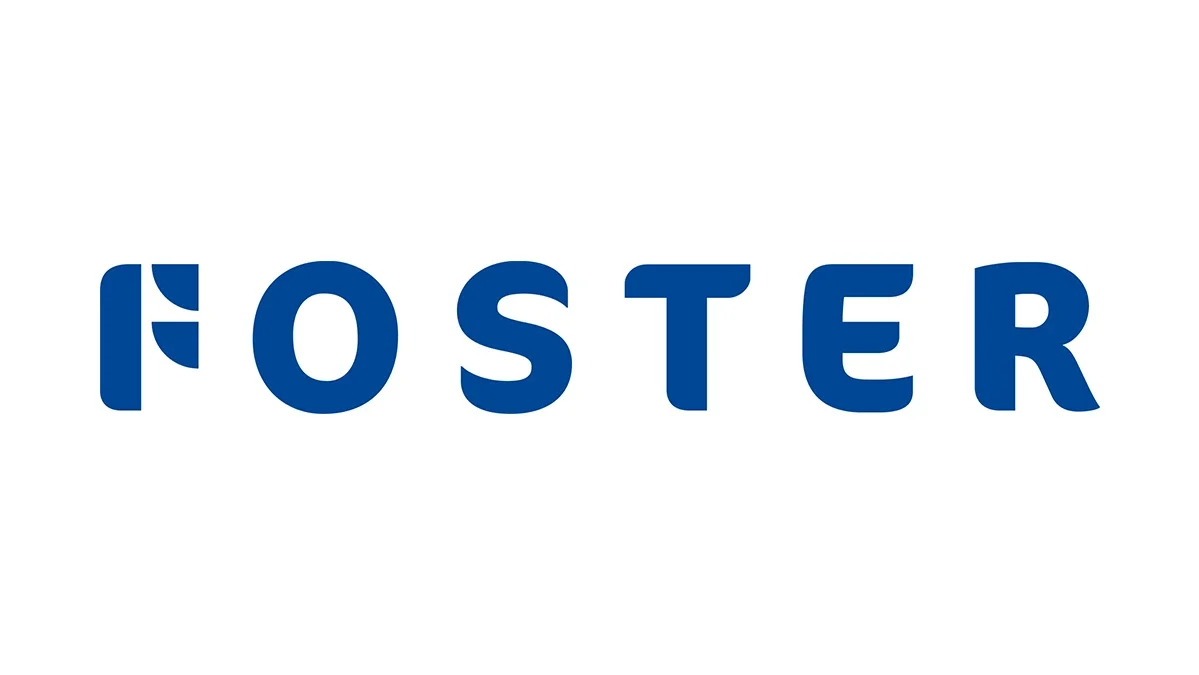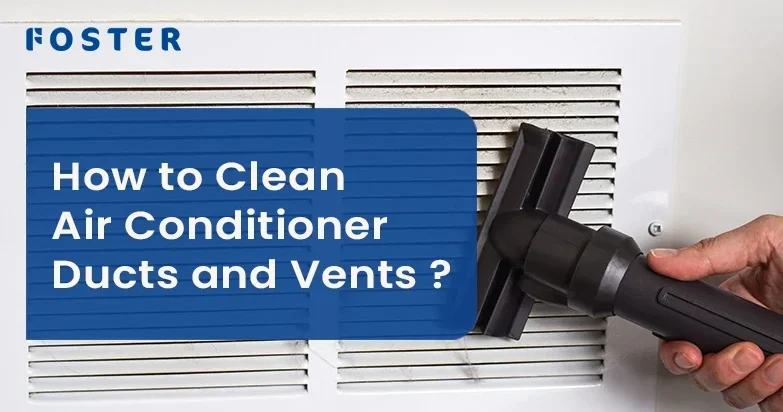Maintaining clean air conditioner ducts and vents is crucial for optimal HVAC performance, energy efficiency, and indoor air quality in commercial buildings. or facility managers, building owners, and maintenance supervisors, being knowledgeable about the correct cleaning methods and industry standards guarantees that your HVAC systems function at their best while adhering to UAE building regulations.
Understanding the Importance of AC Duct Cleaning
Commercial air conditioning systems are essential for comfort in diverse commercial settings, from offices to industrial sites. Over time, however, ducts can accumulate dust, debris, allergens, and contaminants, hindering system performance and air quality. Thus, consistent cleaning of air conditioner ducts and vents is crucial for energy efficiency, preventing breakdowns, and ensuring occupant health and comfort.
The UAE’s climate presents unique challenges for HVAC systems. Dust storms, high humidity, and constant AC usage accelerate contamination. Dubai’s professional HVAC maintenance companies report that poorly maintained ductwork can reduce system efficiency by up to 40%, leading to higher energy bills and premature equipment failure.Understanding why HVAC maintenance is important helps facility managers prioritize regular cleaning and preventive care.
Key Benefits of Professional HVAC Duct Cleaning in UAE:
- Improves indoor air quality compliance
- Enhances AC performance and cooling efficiency
- Extends lifespan of HVAC systems
- Supports energy optimization goals
- Prevents downtime and repairs in industrial setups
Signs Your AC Ducts and Vents Need Cleaning
The following warning signs should be kept in mind by facility and property managers:
- Visible dust accumulation on vents
- Unidentified respiratory conditions or allergies in residents
- Odors of mold or must
- Hot or cold regions or inadequate ventilation
- Higher energy usage for HVAC
- Noise or strain in the HVAC system
If you’re seeing these signs, it’s time to evaluate your commercial HVAC maintenance schedule. Many facility managers question whether AC duct cleaning is necessary, but these warning indicators clearly demonstrate when professional intervention is required. The EPA provides comprehensive guidelines on when and why air ducts should be cleaned, which can help facility managers make informed decisions
The Professional Duct Cleaning Process
For facility managers, understanding the professional cleaning process is crucial for informed decisions regarding contractor selection and service expectations. Commercial AC duct cleaning requires a comprehensive multi-stage approach, with each stage vital for optimal results..
1. System Inspection and Diagnostics
Using inspection cameras and airflow sensors, contractors:
- Assess contamination levels
- Detect mold, pest, or dust buildup
- Identify leaks, insulation damage, or access issues
- Create a custom duct cleaning plan
2. Preparation and Containment
Before cleaning begins, contractors:
- Seal vents and isolate work zones
- Shut down HVAC systems to prevent contamination spread
- Install negative air machines to maintain indoor air quality
- Use protective covers and PPE as per OSHA and local guidelines
3. Mechanical Duct Cleaning
Professional cleaners use:
- Rotary brush machines to dislodge dust
- High-suction vacuum systems (3000–5000 CFM) to remove contaminants
- Compressed air tools for tight corners
All components, including return and supply ducts, registers, coils, diffusers, and plenums, are thoroughly cleaned. The commercial air duct cleaning scope of work typically includes detailed procedures for each of these components. For systems with heavily contaminated coils, additional AC coil cleaning may be required as part of the comprehensive service.
4. Sanitization and Antimicrobial Treatment
After debris removal:
- Contractors apply EPA-certified disinfectants
- Target mold, mildew, bacteria, and VOCs
- Optional: Apply duct sealants or coatings for long-term protection
5. Post-Cleaning Documentation
Professionals provide:
- Before-and-after photo/video evidence
- IAQ test reports (if required)
- Maintenance and inspection reports for compliance
Equipment Requirements for Professional Duct Cleaning
Equipment Type | Purpose |
| Negative Pressure Units | Extract dust and debris without recirculation |
| Rotary Brush Systems | Loosen stubborn buildup inside metal and flexible ducts |
| Compressed Air Tools | Blow out fine particles in difficult areas |
| HEPA Vacuums | Capture microscopic particles during and after cleaning |
| Inspection Cameras | Locate blockages, leaks, and microbial growth |
| Sanitization Sprayers | Apply antimicrobials and mold inhibitors uniformly |
How Often Should Commercial Air Ducts Be Cleaned?
In the UAE’s hot and humid climate, commercial air conditioner ducts require servicing every 12 to 24 months. However, there isn’t a one-size-fits-all solution. Facilities with high foot traffic or sensitive operations, such as hospitals or industrial sites, may necessitate more frequent maintenance.
Recommended Frequency Based on Building Type:
Building Type | Suggested Cleaning Frequency |
| Office Buildings | Every 1–2 years |
| Industrial Facilities | Every 6–12 months |
| Schools & Hospitals | Every 6–12 months |
| Shopping Malls | Every 12–18 months |
| Hotels | Annually |
Consult with a certified HVAC contractor in Dubai to develop a tailored maintenance plan that considers your specific facility’s needs and the UAE’s MEP compliance requirements. A comprehensive preventive maintenance plan should include regular duct cleaning as part of the overall system care strategy.
Professional vs. In-House Cleaning: Making the Right Choice
Facility managers face a key decision when cleaning air conditioner ducts and vents: handle it in-house or hire professional HVAC contractors. This choice significantly impacts cleaning efficiency, compliance with commercial HVAC maintenance standards, and long-term system performance.
In-house methods often prove insufficient due to:
- Lack of industrial-grade HEPA vacuums.
- Absence of microbial or mold certification.
- High risk of ductwork damage.
- Limited ability to inspect or reach internal areas.
Hiring a NADCA-certified HVAC contractor ensures comprehensive cleaning, including:
- Deep system decontamination using negative pressure machines.
- Effective removal of mold, allergens, and hard-to-reach debris.
- Sanitization with EPA-approved chemicals.
- Full documentation for compliance and inspections.
Professional cleaning is essential for large and complex systems, such as multi-zone ductwork, variable air volume (VAV) systems, and ducts with restricted accessibility. The NADCA industry standards provide detailed specifications for professional cleaning procedures that in-house teams typically cannot replicate. Understanding what HVAC equipment comprises these complex systems helps facility managers appreciate the scope of professional cleaning requirements.
Safety Protocols and Compliance Requirements
Professional HVAC cleaning companies follow strict guidelines including:
- Use of PPE: Respirators, gloves, goggles, and protective clothing
- Containment: Preventing debris spread using sealed zones and negative air pressure
- Chemical Handling: Following EPA & Dubai Municipality regulations for sanitizers
- Air Quality Monitoring: Ensuring safe IAQ during and after cleaning
In Dubai and the UAE, compliance with ASHRAE standards, NADCA guidelines, and Dubai Municipality regulations is essential for commercial property maintenance. The Dubai Building Code outlines specific requirements for HVAC system maintenance and indoor air quality standards.
Maintenance Schedule and Frequency Guidelines
Determining suitable cleaning intervals is essential for ensuring system performance and the quality of indoor air. The ideal schedule is influenced by multiple factors, such as the type of facility, occupancy rates, and environmental circumstances.
Standard Commercial Facilities
For many commercial office buildings, professional duct cleaning is recommended every 3 to 5 years. However, high-occupancy buildings or those in dusty environments may require more frequent cleaning to maintain peak efficiency.
Industrial and Manufacturing Facilities
Due to higher contamination levels and specific air quality standards, industrial facilities typically need more frequent cleaning. Depending on the specific industrial activities and contamination sources, cleaning may be required annually or every two to three years.
Healthcare and Food Service Facilities
Healthcare and food service operations demand superior air quality and may require yearly cleaning to comply with industry regulations. These facilities often necessitate specialized cleaning procedures and meticulous record-keeping, as outlined in professional commercial HVAC best practices.
How to Choose the Right Duct Cleaning Contractor
- NADCA Certification or equivalent regional accreditation.
- Demonstrated experience in commercial HVAC duct cleaning.
- Access to advanced duct cleaning technology.
- A comprehensive proposal outlining the cleaning scope, timeline, and guarantees.
- Liability insurance and robust worker safety protocols.
Foster International collaborates with certified HVAC cleaning professionals in the UAE to guarantee superior quality, compliance, and accountability through comprehensive HVAC services.
What Does Commercial Duct Cleaning Cost?
Several factors influence the cost of commercial duct cleaning, including the HVAC system’s size and complexity, the number of air handling units (AHUs), the extent of contamination, and whether additional services like mold treatment or sanitization are required. Facilities with multiple zones, extensive ductwork, or severely contaminated systems may necessitate more time, labor, and specialized equipment, leading to higher overall expenses. In Dubai and the UAE, building accessibility and local labor costs can also affect pricing.
Despite the initial investment, professional duct cleaning offers a high return. Cleaner ductwork reduces HVAC energy consumption by 10% to 20%, lowering utility expenses over time. It also extends the lifespan of crucial HVAC components by reducing stress and wear, potentially adding several years to your system’s operational life. This preventative maintenance proves to be a cost-effective decision for many commercial establishments in the long run, as it decreases the likelihood of malfunctions, improves indoor air quality, and ensures compliance with safety and health regulations.
Regulatory Compliance in the UAE
For commercial properties in Dubai and the UAE, maintaining compliance with local building regulations is crucial. The Al Safat Green Building Regulations emphasize the importance of proper HVAC maintenance for energy efficiency and indoor air quality. Additionally, understanding HVAC standards specific to UAE buildings helps facility managers ensure their systems meet local requirements.
The EPA’s detailed air duct cleaning guidelines provide additional technical specifications that complement UAE regulations, offering a comprehensive framework for maintaining commercial HVAC systems.
Conclusion: Ensure Clean Air and Efficient HVAC with Professional Duct Cleaning
Learning how to clean air conditioner ducts and vents is just the beginning. For commercial facilities in Dubai and throughout the UAE, understanding how to clean air conditioner ducts and vents is crucial. Professional HVAC duct cleaning provides significant advantages, including better air quality, energy efficiency, regulatory compliance, and equipment longevity.
Foster International offers specialized commercial HVAC cleaning services tailored to your facility. Our team utilizes certified equipment and adheres to global best practices, guaranteeing compliance with UAE building regulations.
Contact us today to schedule a professional duct inspection and receive a tailored cleaning and maintenance plan for your building.



 Previous Post
Previous Post
